Six Quick Tips for Sudden STEM Teachers

STEM, it seems, has finally reached Education Buzzword of the Year status. Novice teachers, experienced teachers, and even administrators are being asked to create STEM classes, often with inadequate know-how or support. I know this from all the pleas for help in my own daily email! Let’s read about some real situations educators are dealing with. (I’ve changed the names and locations.)
- My name is Jane and I was a kindergarten teacher. Now I’ve been assigned as the new STEM teacher on campus. I have a beautiful state-of-the-art classroom, but no idea where to begin. I’m looking for all the help I can get, plus I need some curriculum.
- I am a new middle school STEM teacher. I have a biology degree, a graduate degree, and I taught in college for 16 years. Now I’ve been assigned to teach STEM. This project is new to me and to the school district. I need help and resources!
- My name is Jerrold and I teach in a rural community in Ohio. This year our middle school will be a full-fledged STEM school. This process is completely new to me, and I would like to be as successful as possible. I will teach each group of students once a week for about an hour.
- I am Scott Greene, the principal at Jones Middle School. I am looking for ideas on how to start implementing STEM at my school. Where can I find ideas and resources to begin this unfamiliar journey?
- I’m Tamala and I’m a new teacher. I applied to teach high school history. Now I have been asked to teach after-school STEM in a middle school. I don’t know much about STEM and I don’t even know where to get curriculum and what resources to order. Help!
Can you hear a touch of panic in some of these voices?
6 basic ideas for sudden STEM teachers
There is obviously no one-size-fits-all answer for all the dilemmas that first-time STEM educators are facing this fall. If I could sit down for a few minutes and share some basic things with all the folks out there who are under the gun, I think these are the six points I would make:
1. Prepare to integrate the four STEM subjects. STEM subjects are not taught in traditional silos. In your STEM teaching you will be integrating and applying science, technology, engineering, and math. This produces real-world, meaningful learning for students. Your students should receive a more authentic treatment of grade-level science and math content than in traditional classes alone. Help students apply what they learn and become more innovative. Build their ability to develop thinking, reasoning, investigative, and creative skills so they can function and thrive in our highly technological world.
2. Prepare to use the engineering design process (EDP). Engineering is the heart of the STEM process, so you’ll need to be familiar with the steps of this process. Math, science, and technology are integrated – woven together to solve problems – through an engineering design process.
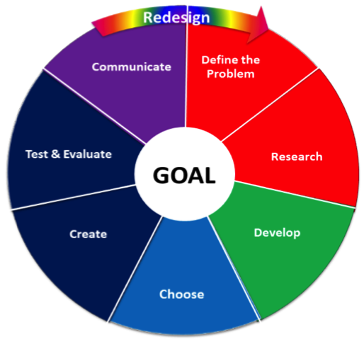
3. Build successful student teams. Your students will work in teams to tackle engineering challenges and solve real world problems. Helping students work together as a productive team is never an easy job. Organize the teams of students for productive teamwork. You can use my free download Student Teaming Tips to give you some help with that.
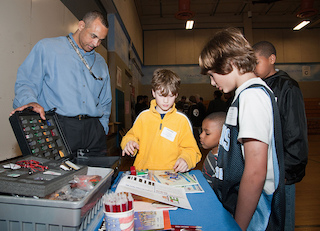
5. Locate STEM Curriculum. Good STEM curriculum is still a work in progress, but several sites carry good STEM lessons. One of my “go to” sites for lesson ideas is eFGI for Teachers. Look at the lesson plans section for some good lessons. TeachEngineering also has some good STEM lessons. A word of caution for any site you use, however: Not every lesson that claims to be STEM is actually STEM. Here is a checklist I use.
A good STEM lesson —
- Presents a real and compelling open-ended problem
- Allows for several acceptable solutions for the problem
- Integrates and applies grade-level content in science and math
- Expects students to work in teams to solve the problem
- Uses the engineering design process approach for solving problems
- Includes technology that adds value and enhances learning
- Supports a teaching process that is inquiry-based, hands-on, and student-centered
- Requires students to design and create a model or prototype of the solution
- Provides time for kids to test their solutions, evaluate the results, and redesign if needed
- Views failure as a positive step toward discovering and designing solutions.
You might also want to take a look at three posts here at MiddleWeb:
• Engineer a Great Middle School STEM Curriculum
• 12 Steps to Great STEM Lessons and
• Before You Lead that STEM Lesson
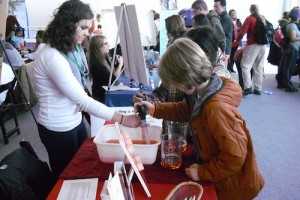
Study, learn, persist, and try to have fun!
I hope those ideas will be of some help. For more, here’s our archive of STEM articles. Remember that STEM lessons focus on using the engineering design process to apply concepts students have already learned in math and science classes, along with appropriate use of technology.
Congratulations and best of luck to you! Try to have some fun. You may get off to a challenging start, but as you study, learn, and persist you will discover your STEM efforts can have authentic value for your students.
Find Even More Help in Anne Jolly’s Article:
Every STEM Teacher Is ‘”NEW” in 2022

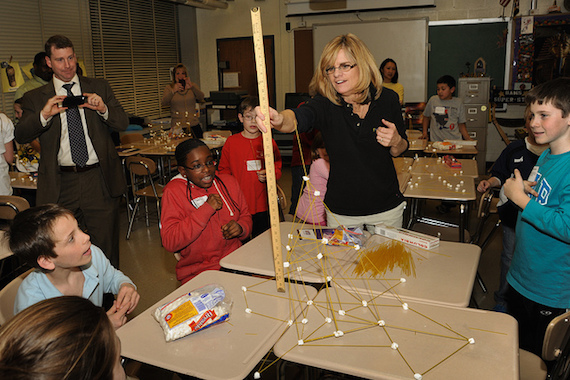
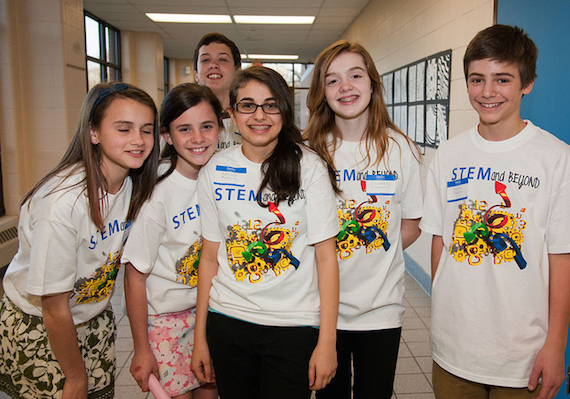




































Another great blog post, Anne. Love your repeated inclusion that the end result of the EDP is a tangible product [“a device or prototype”]. EDP is not the same as a science experiment. [NGSS clarifies that here: http://www.nextgenscience.org/three-dimensions ]. Also, that solutions/projects are student-centered. There is no right answer, only discovery! Thanks for this website.
Thanks! It’s sometimes hard for science teachers (I was one) to wrap their heads around the difference between the scientific method and the engineering design process (EDP). What’s so neat about STEM is that kids can go so much deeper in the science and math learning because they are actually applying the content. Math and science become useful to them and take on real value. And STEM can also develop persistence. Think of how many times those devices and prototypes don’t work. Then it’s back to the drawing board.
In assessing and designing projects it can be helpful to consider the roadblocks that students will run into. These are your entry points for meaningful integration of Science and Math content. For example, If three rubber bands launched my projectile 50% farther than I wanted, how many rubber bands should I use next time?
Great example! So often kids miss the connections between math and science – not surprising since they’re generally taught in silos. Thanks for that insight.
Thank you for this post!!! It comes at just the right time for me as I’m feeling a little overwhelmed when starting a new elementary course from scratch!
Wow! I imagine “overwhelmed” is an understatement. The thing to remember about elementary STEM is that you’ll need to do a lot of scaffolding. But the thing I like best about elementary STEM is that your whole day’s (week’s) curriculum can be built around a STEM unit. Kids can really begin to build the idea that the subjects they are learning are interconnected. They can begin in kindergarten looking at a process for thinking through how to solve a problem. The possibilities for their learning are truly astounding.
Great recommendations here! The STEM consultancy at Kent ISD in Grand Rapids, MI has defined STEM as, “The integration of science, technology, engineering, and mathematics to solve complex, real-world problems.” As an active commercial pilot I use unmanned vehicle technology in classrooms, while my peer (a mechanical engineer) uses engineering software to teach business problem solving. Feel free to access some of our ideas at this link. Good luck all, and STEM it up!
http://www.kentisd.org/instructional-services/career-readiness/for-educators/stem-resources/
As a STEM/Engineering & Technology teacher, I’m glad to see ( finally) someone that actually knows what their talking about. I’ve sat through so many STEM workshops that totally left out the Engineering part and referred to the Technology as whiteboards! One presenter told me that she was a Science teacher and didn’t have a clue. I asked why she was there and was told that she had been sent!! Gee!
Thanks for your comment, Don. I’m also frustrated by the kind of thinking about STEM that just focuses on part of the acronym and totally ignores the E. Without engineering there’s no practical way to integrate the other subjects. Engineering is pretty much the entire STEM story.
Hear, hear, Ann! An additional way for teachers to look at it is that _everything_ around us that is not part of nature is the result of engineering. Pick anything – even a pencil. How did this come about/evolve? Another aspect is linking STEM with careers. I have a great slide I created [for a course] that starts out with the words “Engineering – Customize a Bicycle: Connections”; then animates to numerous related topic areas [e.g. Repair/Manufacturing Technologies, Bikes around the world, Design/Build/Customize, Physics, etc.] surrounding those words. Then animates again to add in careers associated with all those topics. [I’d send you the slide if there is a way to post it here.]
I’d love to see the slide, Donna! I can’t post it, but the Middle Web tech guru may figure out a way to post it. Thanks!
Will do!
Ann,
I’ve been asked to teach stem classes for K-8 (800 students). I see each grade level once a week for 40 minutes. I have no help and feel like I am working twice as hard than what I did in the classroom. I am exhausted at the end of each day. Do you have any suggestions for me or my administrators?
Whoa. That’s a stunner, Debbie! On the surface of it, this is certainly a daunting task. A couple of questions to start with:
1. What are the outcomes for this course? I presume the admin has some specific goals in mind for what kids should know and be able to do after taking it.
2. What kind of resources (including money) have been allotted for this course?
Now – courage! You obviously can’t teach a true STEM curriculum seeing each class just 40 minutes a week. So . . . consider teaching this as an informal curriculum – like after-school or museum-style. Why don’t you email me directly at jollyanne@gmail.com? We can work through a few ideas and see if they’re doable for your situation. Look forward to hearing from you!
A free, online, STEM program has been created through a Homeland Security Grant awarded to NICERC (National Integrated Cyber Education Research Center), a division of the Cyber Innovation Center in Bossier City, Louisiana. Here is the link: http://www.nicerc.org
I am a STEM teacher at a new magnet school, and we use this program. It is awesome.
This looks really promising – with a lot of the work done for the teacher. I plan to dig deeper and make sure the STEAM projects do address solving real world problems and using and engineering design process. Thanks so much for sharing this resource, Tara!
I am struggling with putting an SGO (Student Growth Objectives) together for my STEM class in New Jersey. Any suggestions or samples would be most appreciated.
Hi, Carolyn. Growth objectives for STEM might include improvement in some of these areas:
– Teamwork and collaboration skills
– Understanding and accurately applying knowledge of math, science, and technology
– Using the engineering design process (EDP) to guide their thinking as problem-solvers.
– Attitudes about and confidence with STEM lessons.
– Degree of engagement and participation in STEM lessons
I just found your post and I love the clear list of ten characteristics of a STEM lesson. Thank you for covering failure (#10). STEM/STEAM is a great way to take reasoned risks and learn from failure.
I appreciate your generous comment, Rich. It is such a relief for students to discover that failing to succeed is a way of learning how to succeed.
Wow! fantastic post. I am about to be interviewed to be a STEM tutor, and your post helped a lot, thank you so much. I hope I can help a lot of kids to end up loving (especially girls) STEM. The stigma of these subjects being “too hard” is sad. We need to encourage our kids more
Thank you for becoming a STEM tutor, Andrea! I so much appreciate your interest in this area, and I’m glad my post provided some help. I certainly agree with you about wanting girls to love this area and become part of the workforce who solves gobal problems. I hope things go well for you.
I am glad I am part of this innovative development